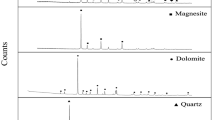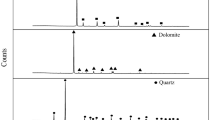Abstract
IN an earlier communication1, a procedure for concentrating inorganic ions is outlined. It has been found now that it is possible to concentrate organic ions from aqueous solution by adding a surfactant collector, of opposite charge, suitably prepared to ensure the absence of micelles, and then, by the introduction of fine bubbles, floating the insoluble product to the surface where it collects in the froth, or preferably as a scum. The principle is the same as for inorganic ion flotation, but there is one important distinction. In inorganic ion flotation, because the ions are often polyvalent, the product between the ion and the collector having more than one hydrophobic centre, is highly insoluble and usually forms a scum very quickly. But organic ions are often univalent, and therefore the product, though still insoluble, sheds water less readily, and there is more tendency to form a stable froth. This can, however, be broken by blowing hot air on to it, though it is not desirable to destroy it completely. A residual froth bed should be left, upon which the concentrate can float. This becomes necessary as the uni-univalent product, which is really a salt, can sometimes dissociate again, if allowed to come into contact with bulk water. If the precautions mentioned in the previous communication are observed, excellent recoveries from very dilute solutions are obtainable. Furthermore, the remarkable degree of selectivity shown by the method in the case of inorganic ions, when starvation amounts of collector are added incrementally, is shown as well in the case of organic ions.
This is a preview of subscription content, access via your institution
Access options
Subscribe to this journal
Receive 51 print issues and online access
$199.00 per year
only $3.90 per issue
Buy this article
- Purchase on Springer Link
- Instant access to full article PDF
Prices may be subject to local taxes which are calculated during checkout
Similar content being viewed by others
References
Nature, 184, 1062 (1959).
Author information
Authors and Affiliations
Rights and permissions
About this article
Cite this article
SEBBA, F. Organic Ion Flotation. Nature 188, 736–737 (1960). https://doi.org/10.1038/188736a0
Issue Date:
DOI: https://doi.org/10.1038/188736a0
Comments
By submitting a comment you agree to abide by our Terms and Community Guidelines. If you find something abusive or that does not comply with our terms or guidelines please flag it as inappropriate.



